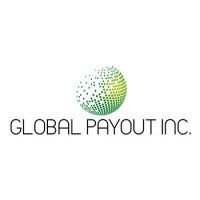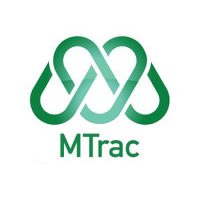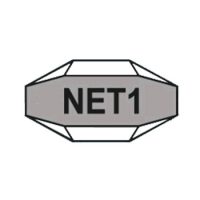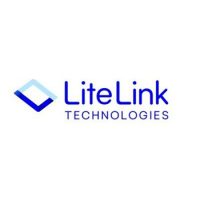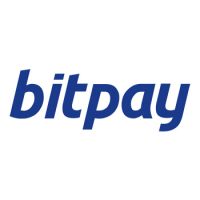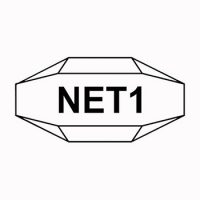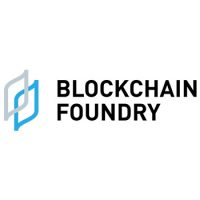Blockchain Press Releases
Barcode Printers Market Projected to Reach $13,510.6 Million, Globally, By 2032 at 13.7% CAGR: Allied Market Research

The rising demand for mobile printers and the growing adoption of barcode printers in the manufacturing industry are anticipated to drive the growth of the global barcode printers market during the forecast period from 2023 to 2032. The North America region is predicted to hold the majority of market share by 2032.
PORTLAND, Ore., Aug. 18, 2023 /PRNewswire/ — Allied Market Research has recently published a report, titled, “Barcode Printers Market By Product Type (Desktop Printer, Mobile Printer, and Industrial Printer), Printing Type (Thermal Transfer, Direct Thermal, and Others), and End-User Industry (Manufacturing, Retail, Transportation and Logistics, Healthcare, and Other): Global Opportunity Analysis and Industry Forecast, 2023-2032″. According to the report, the global barcode printers market generated $3,758.6 million in 2022, and is anticipated to generate $13,510.6 million by 2032, witnessing a CAGR of 13.7% from 2023 to 2032.
Request PDF Brochure: https://www.alliedmarketresearch.com/request-sample/35366
Prime Determinants of Growth
The rising demand for mobile printers, the growing demand for industrial printers across numerous industrial sectors, and the rising usage of barcode printers for streamlining logistics processes are the major factors predicted to drive the growth of the global barcode printers market in the forecast timeframe. However, the high costs associated with barcode printers and the strict regulations in the printing industry may hamper the barcode printers market growth in the coming period. On the contrary, the integration of advanced connectivity & wireless technologies and the growing usage of electronic shelf labels & smart label printers provides are expected to offer growth opportunities for expansion of the barcode printers market in the 2023-2032 forecast period.
Report Coverage and Details:
Restraints
|
Report Coverage |
Details |
|
Forecast Period |
2023–2032 |
|
Base Year |
2022 |
|
Market Size in 2022 |
$3,758.6 million |
|
Market Size in 2032 |
$13,510.6 million |
|
CAGR |
13.7 % |
|
No. of Pages in Report |
309 |
|
Segments Covered |
Product Type, Printer Type, End-User, and Region |
|
Drivers |
Growing adoption of barcodes in manufacturing industry Rise in demand for wireless mobile printers |
|
Opportunities |
Incorporation of computer systems with barcode printers |
|
Increasing focus of key market players on producing barcode printers with advanced features |
|
|
Restraints |
High initial investment cost |
COVID-19 Scenario:
- The outbreak of the COVID-19 pandemic has had a significant influence on the growth of the global barcode printers market. While the epidemic caused disruptions in the supply chain, it also accelerated the adoption of digitized and contactless solutions, creating novel avenues for growth in sectors like logistics, healthcare, and e-commerce.
- The barcode technology proved invaluable during the crisis in promoting a safer and more efficient manufacturing environment. Retail and e-commerce sector also actively accepted barcode printers to cater to the relentless rise of e-commerce sales in the wake of lockdowns.
- The barcode printers market is projected to show steady growth in the future as the demand for efficient supply chain management is increasing and people are shifting towards online shopping.
Industrial Printer Sub-segment to be Highly Dominant During the Forecast Period
The industrial printer sub-segment accounted for the major share of 48.5% in the barcode printers market in 2022 and is expected to continue to maintain its dominance during the forecast period. The dominant growth of the sub-segment is mainly because industrial printers are long-lasting and high-quality computer printers used to print barcodes onto tags, labels, packages, and others. Besides, the growing usage of industrial printers in various sectors, such as warehouses, retail stores, and manufacturing factories, as they are tough and dependable is driving the sub-segment’s growth.
Thermal Transfer Sub-segment to Hold the Majority of Market Share by 2032
The thermal transfer sub-segment accounted for the highest market share of 40.7% in 2022 and is expected to witness significant growth during the forecast period. This is mainly owing to the adaptability, dependability, and capacity of thermal transfer printers to create highly legible barcodes in difficult conditions. In addition, these printers provide high-quality printing, are affordable, and majorly used in manufacturing, healthcare, and electronics sectors.
Manufacturing Sub-segment to Flourish Immensely During the Forecast Period
The manufacturing sub-segment accounted for the highest market share of 31.6% in 2022 and is predicted to continue to hold maximum share by 2032. The strong growth of the sub-segment can be attributed to the crucial role of barcode printers in the manufacturing industry in optimizing production processes, assuring accurate inventory management, and enhancing overall supply chain efficiency. Additionally, barcode printers are widely used in the manufacturing industry to create tags and labels that facilitate streamlined tracking as well as identification of equipment, materials, and products.
North America Market to Hold Majority of Market Share by 2032
The North America region accounted for the highest share of 40.0% in the global barcode printers market in 2022 and is expected to continue to maintain its dominance during the forecast period. This is mainly because North America has a well-developed infrastructure and heavily invests on R&D. The persistent growth of the retail & e-commerce industries, along with the rising preference of people for online shopping in the U.S. and Canada, are also anticipated to drive the demand for barcode printers across the region.
Want to Access the Statistical Data & Graphs, and Key Players’ Strategies: https://www.alliedmarketresearch.com/purchase-enquiry/35366
Leading Players in the Barcode Printers Market:
- Dascom
- Zebra Technologies Corp.
- Printronix, Inc.
- Oki Electric Industry Co., Ltd.
- SATO Holdings Corporation
- Honeywell International Inc.
- Toshiba Tec Corporation
- Canon Inc.
- Avery Dennison Corporation.
The report provides a detailed analysis of the key players of the global barcode printers market. These players have adopted different strategies, such as new product launches, collaborations, expansion, joint ventures, agreements, and others to increase their market share and maintain their dominance in different regions. The report is valuable in highlighting business performance, operating segments, product portfolio, and strategic moves of barcode printers market players to showcase the competitive scenario.
Key Benefits For Stakeholders:
- This report provides a quantitative analysis of the market segments, current trends, estimations, and dynamics of the barcode printers market analysis from 2022 to 2032 to identify the prevailing barcode printers market opportunities.
- The market research is offered along with information related to key drivers, restraints, and opportunities.
- Porter’s five forces analysis highlights the potency of buyers and suppliers to enable stakeholders make profit-oriented business decisions and strengthen their supplier-buyer network.
- In-depth analysis of the barcode printers market segmentation assists to determine the prevailing market opportunities.
- Major countries in each region are mapped according to their revenue contribution to the global market.
- Market player positioning facilitates benchmarking and provides a clear understanding of the present position of the market players.
- The report includes the analysis of the regional as well as global barcode printers market trends, key players, market segments, application areas, and market growth strategies.
Barcode Printers Market Key Segments:
By Product Type:
- Desktop Printer
- Mobile Printer
- Industrial Printer
By Printing Type:
- Thermal Transfer
- Direct Thermal
- Others
By End-User Industry:
- Manufacturing
- Retail
- Transportation and Logistics
- Healthcare
- Other
By Region:
- North America (U.S., Canada, and Mexico)
- Europe (U.K., Germany, France, Italy, Spain, Russia, Netherlands, Belgium, Poland, and Rest of Europe)
- Asia-Pacific (China, Japan, India, South Korea, Australia, Malaysia, Thailand, Philippines, Indonesia, and Rest of Asia-Pacific)
- LAMEA (Latin America, Middle East and Africa)
Procure Complete Report (309 Pages PDF with Insights, Charts, Tables, and Figures) @ https://bit.ly/3QGXMXd
Trending Reports in Semiconductor and Electronics Industry (Book Now with 10% Discount + COVID-19 Scenario):
Zink Printing Market By Component (Zink-Based Paper and Zink-Based Printer), Functionality (Compact Photo Printer and Camera Photo Printer), Connectivity (Bluetooth, Near-Field Communication, and Others), and Application (Home and Commercial): Global Opportunity Analysis and Industry Forecast, 2021-2030
Large Format Printer Market By Offering (Printer, Software, and Service), Printing Technology (Inkjet Printing and Toner Based Printing (Laser Systems)), Print Width (11″ TO 24″, 24″ TO 36″, 34″ TO 44″, 44″ TO 60″, 60″ TO 72″, and Above 72″), Ink Type (Aqueous, Solvent, UV-Curable, Dye Sublimation, Latex, and Others), and Application (Apparels & Textiles, Signage, Advertising, Décor, CAD & Technical Printing, Construction, and Others): Global Opportunity Analysis and Industry Forecast, 2021-2030
Personal 3D Printers Market By Type (Hardware, Software, and Services), Material (Plastic, Metal, Ceramic, Resins, and Other), Technology (Fused Deposition Modeling (FDM), Stereolithography (SLA), Digital Light Processing (DLP), Continuous liquid Interface Production (CLIP), Selective Laser Sintering (SLS), Selective Deposition Lamination, Multi Jet Fusion, Polyjet, Selective Laser Melting (SLM), and Others), Form (Filament, Powder, and Liquids), Additive Manufacturing Process (Material Extrusion, Powder Bed Fusion, Photopolymerisation, Material Jetting, and Sheet Lamination), and Application (Education, Entertainment, Photography, Architecture, Fashion & Jewelry, and Others): Global Opportunity Analysis and Industry Forecast, 2021-2030
Barcode Reader Market By Type (Handheld, and Fixed), Application (Logistics and Warehousing, Industrial Manufacturing, Retail and Wholesale, Healthcare, and Others): Global Opportunity Analysis and Industry Forecast, 2023-2032
Scanner Market By Type (Flatbed Scanners, Handheld Scanners, Sheetfed Scanners, and Drum Scanner), End-User (Individual, and Commercial): Global Opportunity Analysis and Industry Forecast, 2023-2032
About Us:
Allied Market Research (AMR) is a full-service market research and business-consulting wing of Allied Analytics LLP based in Portland, Oregon. Allied Market Research provides global enterprises as well as medium and small businesses with unmatched quality of “Market Research Reports” and “Business Intelligence Solutions.” AMR has a targeted view to provide business insights and consulting to assist its clients to make strategic business decisions and achieve sustainable growth in their respective market domain.
We are in professional corporate relations with various companies and this helps us in digging out market data that helps us generate accurate research data tables and confirms utmost accuracy in our market forecasting. Allied Market Research CEO Pawan Kumar is instrumental in inspiring and encouraging everyone associated with the company to maintain high quality of data and help clients in every way possible to achieve success. Each and every data presented in the reports published by us is extracted through primary interviews with top officials from leading companies of domain concerned. Our secondary data procurement methodology includes deep online and offline research and discussion with knowledgeable professionals and analysts in the industry.
Contact:
David Correa
1209 Orange Street,
Corporation Trust Center,
Wilmington, New Castle,
Delaware 19801 USA.
Int’l: +1-503-894-6022
Toll Free: +1-800-792-5285
UK: +44-845-528-1300
India (Pune): +91-20-66346060
Fax: +1-800-792-5285
[email protected]
Logo: https://mma.prnewswire.com/media/636519/3950895/Allied_Market_Research_Logo.jpg
![]() View original content:https://www.prnewswire.co.uk/news-releases/barcode-printers-market-projected-to-reach-13-510-6-million-globally-by-2032-at-13-7-cagr-allied-market-research-301904635.html
View original content:https://www.prnewswire.co.uk/news-releases/barcode-printers-market-projected-to-reach-13-510-6-million-globally-by-2032-at-13-7-cagr-allied-market-research-301904635.html

Blockchain
Ethereum ETFs Aren’t Blockchain But Is A Revolutionary Tech: Top 6 Amazing Reasons To Invest In Them
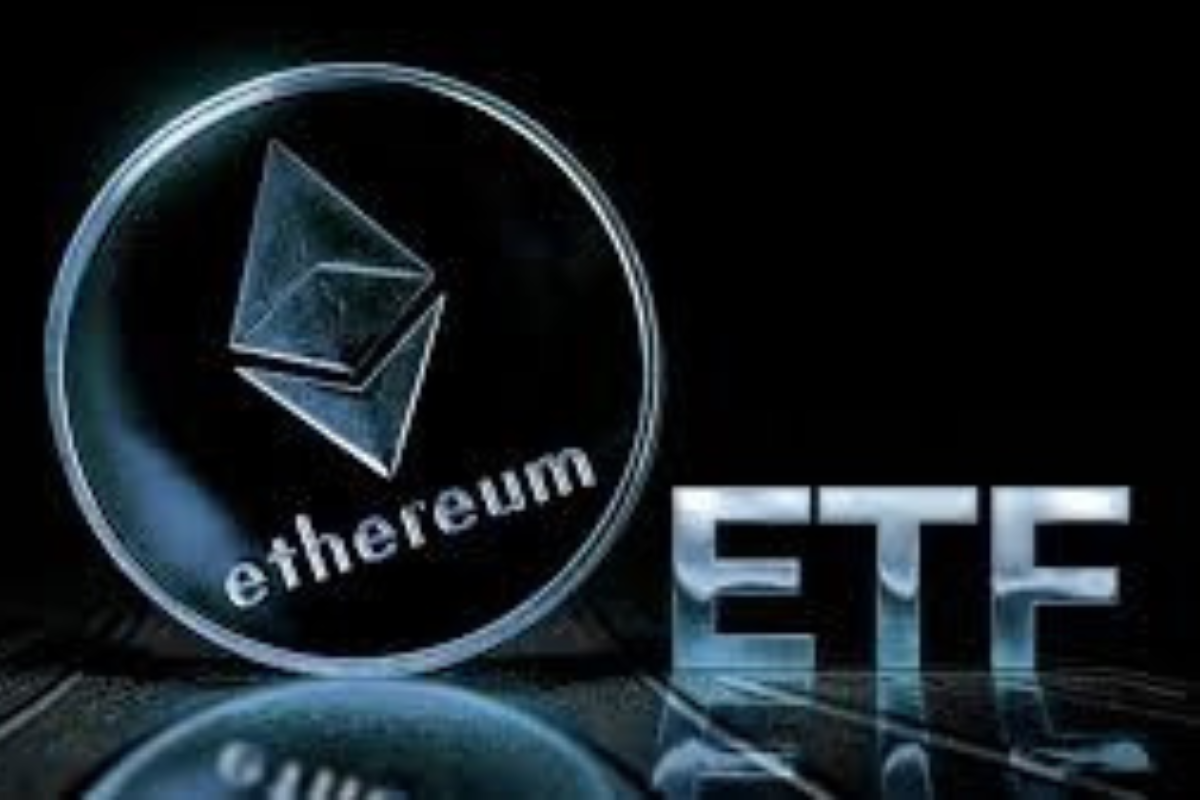
The financial landscape is rapidly evolving, with the integration of blockchain technology and cryptocurrencies becoming more prominent. Among these, Ethereum ETFs (Exchange-Traded Funds) have emerged as a significant investment vehicle, offering exposure to the Ethereum blockchain’s native cryptocurrency, Ether (ETH), without requiring direct ownership. However, it’s crucial to understand that Ethereum ETFs are distinct from the blockchain itself and serve different purposes in the investment world.
Understanding Ethereum and ETFs
Ethereum: A decentralized platform that enables the creation and execution of smart contracts and decentralized applications (dApps). It operates using its cryptocurrency, Ether (ETH), which fuels the network.
ETF (Exchange-Traded Fund): A type of investment fund that holds a collection of assets and is traded on stock exchanges. ETFs can include various asset classes, such as stocks, commodities, or bonds.
Ethereum ETFs: The Intersection of Traditional Finance and Cryptocurrency
An Ethereum ETF provides a way for investors to gain exposure to the price movements of Ether without directly purchasing the cryptocurrency. This is achieved through an ETF structure, where the fund holds assets linked to the value of Ether, and investors can buy shares of the ETF on traditional stock exchanges.
Key Features of Ethereum ETFs:
- Indirect Exposure: Investors gain exposure to Ether’s price changes without needing to manage or store the cryptocurrency themselves.
- Regulatory Compliance: Unlike the relatively unregulated cryptocurrency market, ETFs operate under the oversight of financial regulators, offering a layer of investor protection.
- Accessibility: Ethereum ETFs are available through traditional brokerage platforms, making them accessible to a broader range of investors.
Why Invest in an Ethereum ETF?
- Diversification: Including an Ethereum ETF in a portfolio can provide exposure to the cryptocurrency market, potentially enhancing diversification beyond traditional assets.
- Convenience and Familiarity: ETFs are a familiar investment product, simplifying the process of investing in cryptocurrencies.
- Professional Management: ETF managers handle the investment decisions, including the buying and selling of assets, which can be advantageous for those less familiar with the cryptocurrency space.
- Regulatory Oversight: ETFs are subject to regulatory scrutiny, potentially offering more safety and transparency compared to direct cryptocurrency investments.
- Potential for Growth: As the cryptocurrency market grows, ETFs linked to assets like Ether may benefit from rising prices.
Key Differences Between Ethereum and Ethereum ETFs
While both are related to the Ethereum blockchain, Ethereum itself and Ethereum ETFs represent different forms of investment:
- Ethereum (ETH):
- Direct ownership of the cryptocurrency.
- Full exposure to Ethereum’s features, including staking and network participation.
- Traded on cryptocurrency exchanges.
- Highly volatile and largely unregulated.
- Ethereum ETF:
- Indirect exposure through shares representing Ether’s value.
- Traded on traditional stock exchanges under regulatory oversight.
- Offers a more stable and familiar investment structure.
- Typically lower volatility compared to direct cryptocurrency ownership.
Future Considerations for Ethereum ETFs
The approval and launch of Ethereum ETFs mark a significant milestone in bringing cryptocurrencies closer to mainstream finance. They offer a convenient and regulated means for investors to gain exposure to the growing digital assets market. However, they also come with limitations, such as not allowing direct participation in the Ethereum ecosystem’s innovations, like dApps and smart contracts.
As the market evolves, we may see more sophisticated financial products that better capture the full potential of the Ethereum ecosystem. For now, Ethereum ETFs provide a balanced option for those interested in cryptocurrency exposure within the framework of traditional finance.
In conclusion, while Ethereum ETFs offer a gateway into the world of digital assets, they should be viewed as complementary to, rather than a replacement for, direct investment in the underlying blockchain technologies. Investors should carefully consider their investment goals, risk tolerance, and the unique attributes of both Ethereum and Ethereum ETFs when making investment decisions.
Source: blockchainmagazine.net
The post Ethereum ETFs Aren’t Blockchain But Is A Revolutionary Tech: Top 6 Amazing Reasons To Invest In Them appeared first on HIPTHER Alerts.
Blockchain
Nexo Reaffirms Commitment to Data Protection with SOC 3 and SOC 2 Compliance
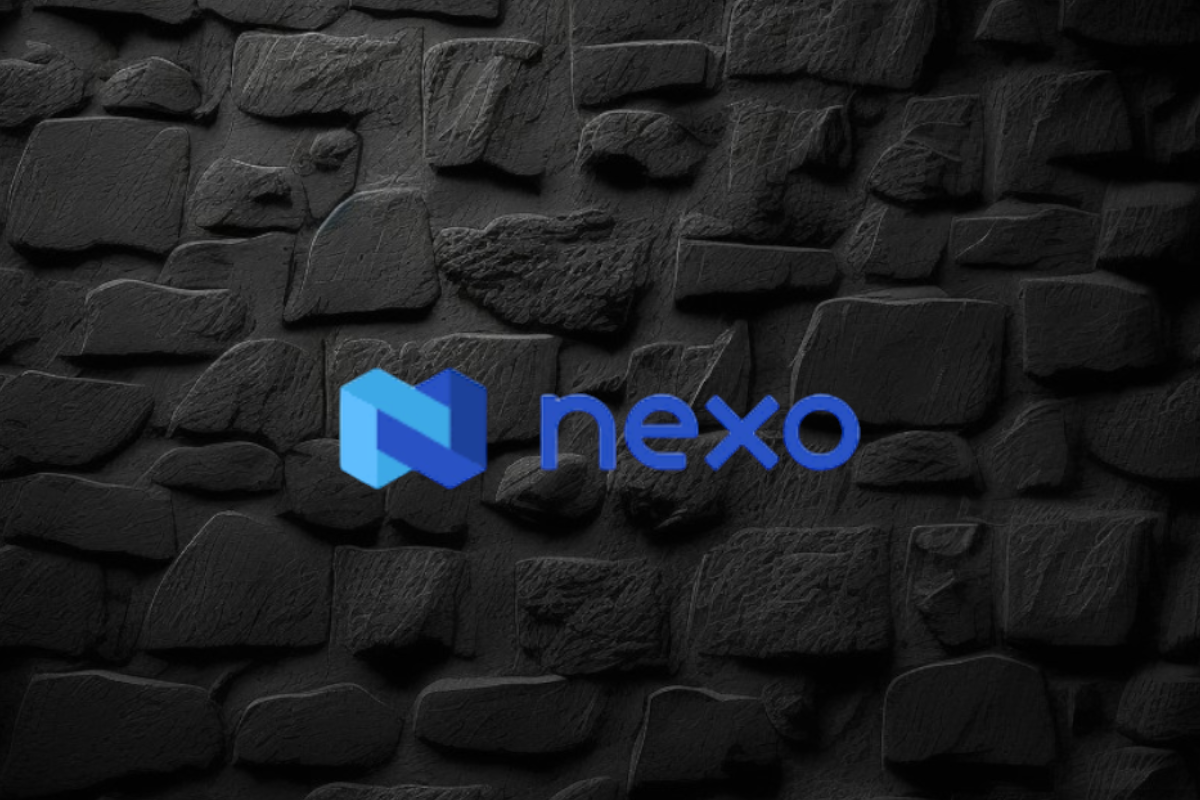
Nexo, a leading institution in the digital assets industry, has reinforced its commitment to data security by renewing its SOC 2 Type 2 audit and attaining a new SOC 3 Type 2 assessment without any exceptions. This rigorous audit process, conducted by A-LIGN, a respected independent auditor specializing in security compliance, confirms Nexo’s adherence to stringent Trust Service Criteria for Security and Confidentiality.
Key Achievements and Certifications
- SOC 2 and SOC 3 Compliance:
- SOC 2 Type 2: This audit evaluates and reports on the effectiveness of an organization’s controls over data security, particularly focusing on the confidentiality, integrity, and availability of systems and data.
- SOC 3 Type 2: This public-facing report provides a summary of SOC 2 findings, offering assurance to customers and stakeholders about the robustness of Nexo’s data security practices.
- Additional Trust Service Criteria:
- Nexo expanded the scope of these audits to include Confidentiality, showcasing a deep commitment to protecting user data.
- Security Certifications:
- The company also adheres to the CCSS Level 3 Cryptocurrency Security Standard, and holds ISO 27001, ISO 27017, and ISO 27018 certifications, awarded by RINA. These certifications are benchmarks for security management and data privacy.
- CSA STAR Level 1 Certification:
- This certification demonstrates Nexo’s adherence to best practices in cloud security, further solidifying its position as a trusted partner in the digital assets sector.
Impact on Customers and Industry Standards
Nexo’s rigorous approach to data protection and compliance sets a high standard in the digital assets industry. By achieving these certifications, Nexo provides its over 7 million users across more than 200 jurisdictions with confidence in the security of their data. These achievements not only emphasize the company’s dedication to maintaining top-tier security standards but also highlight its proactive stance in fostering trust and transparency in digital asset management.
Nexo’s Broader Mission
As a premier institution for digital assets, Nexo offers a comprehensive suite of services, including advanced trading solutions, liquidity aggregation, and tax-efficient credit lines backed by digital assets. Since its inception, the company has processed over $130 billion, showcasing its significant impact and reliability in the global market.
In summary, Nexo’s successful completion of SOC 2 and SOC 3 audits, along with its comprehensive suite of certifications, underscores its commitment to the highest standards of data security and operational integrity. This dedication positions Nexo as a leader in the digital assets space, offering unparalleled security and peace of mind to its users.
Source: blockchainreporter.net
The post Nexo Reaffirms Commitment to Data Protection with SOC 3 and SOC 2 Compliance appeared first on HIPTHER Alerts.
Blockchain
Marshall Becomes First US Senator to Walk from Controversial Crypto Bill He Co-Sponsored

Republican Senator Roger Marshall has withdrawn his support for the Digital Asset Anti-Money Laundering Act of 2023, a controversial bill he initially co-sponsored with Senator Elizabeth Warren and others. This bill, reintroduced in the Senate on July 27, 2023, aimed to bring the cryptocurrency industry into alignment with existing anti-money laundering (AML) and counter-terrorism financing (CTF) laws.
Key Provisions of the Bill
The legislation proposed stringent regulations on digital asset providers, including unhosted wallet providers, miners, and validators, by classifying them as financial institutions under the Bank Secrecy Act (BSA). It mandated these entities to adhere to BSA compliance requirements, which include extensive reporting and monitoring responsibilities. Additionally, the bill called for the Financial Crimes Enforcement Network (FinCEN) to establish regulations for reporting significant foreign digital asset holdings and to create compliance measures to address risks associated with anonymity-enhancing technologies.
Senator Marshall’s Shift
Marshall’s withdrawal from the bill comes as a surprise, particularly given his earlier criticisms of cryptocurrencies, which he has described as a “threat to national security.” This includes concerns over stablecoins like Tether potentially facilitating illegal activities and circumventing U.S. sanctions. Despite his earlier stance, Marshall’s departure from the legislation suggests a reconsideration of the bill’s implications or an alignment with broader political and industry perspectives on cryptocurrency regulation. His office has not provided a comment on the reasons for his withdrawal.
Political and Industry Reactions
The bill had garnered significant bipartisan support, with 18 co-sponsors, reflecting a broader concern in Congress over regulating the rapidly growing cryptocurrency market. However, it has also faced criticism for potentially imposing impractical compliance burdens that could stifle innovation and push crypto activities offshore. Critics argue that the bill’s stringent requirements could inadvertently drive users toward unregulated platforms, thereby undermining its intent to enhance security and regulatory oversight.
Broader Context
The withdrawal comes at a time when cryptocurrency regulation is a highly contentious issue in U.S. politics. Former President Donald Trump has promised to relax crypto regulations if elected, contrasting with the current administration’s more stringent stance. Under President Joe Biden, the Securities and Exchange Commission (SEC) and other regulatory bodies, led by figures like Gary Gensler, have taken a more rigorous approach to regulating the sector, which has drawn criticism for being overly restrictive.
Senator Marshall’s decision to step back from the Digital Asset Anti-Money Laundering Act reflects the complex and evolving nature of cryptocurrency regulation in the U.S. While the bill seeks to bring greater oversight and security to the crypto industry, it also raises concerns about regulatory overreach and its potential negative impact on innovation and privacy. As the debate continues, the U.S. legislative and regulatory landscape for cryptocurrencies remains in flux, balancing the need for security with the desire to foster technological innovation.
Source: decrypt.co
The post Marshall Becomes First US Senator to Walk from Controversial Crypto Bill He Co-Sponsored appeared first on HIPTHER Alerts.
-

 Blockchain4 days ago
Blockchain4 days agoBinance Cleared to Invest Customer Assets in US Treasury Bills: What It Means for Crypto and Dollar Dominance
-

 Blockchain4 days ago
Blockchain4 days agoDeep Custodian Limited Obtains Hong Kong TCSP License, Authorized to Provide Compliant Crypto Asset Custody Services
-

 Blockchain Press Releases2 days ago
Blockchain Press Releases2 days agoBybit Web3 Livestream Explores Cultural Meme Coins and Other Trends
-

 Blockchain2 days ago
Blockchain2 days agoBlockchain Intelligence Group adds additional modules and launches its Certified Cryptocurrency Investigator – Advanced Series
-

 Blockchain3 days ago
Blockchain3 days agoBitAngels Network Hosts Blockchain Pitch Competition in Nashville
-

 Blockchain Press Releases2 days ago
Blockchain Press Releases2 days agoBybit Surges to Second Place in Derivatives Market, Solidifying Position as Global Crypto Trading Leader
-

 Blockchain4 days ago
Blockchain4 days agoCoinW Continues Expedition Trek And Double Down On Presence At ETH-Native Events
-

 Blockchain1 day ago
Blockchain1 day agoKevin O ‘Leary Addresses Crypto Investing, Ethereum ETFs, and SEC Chair in Recent Interview






